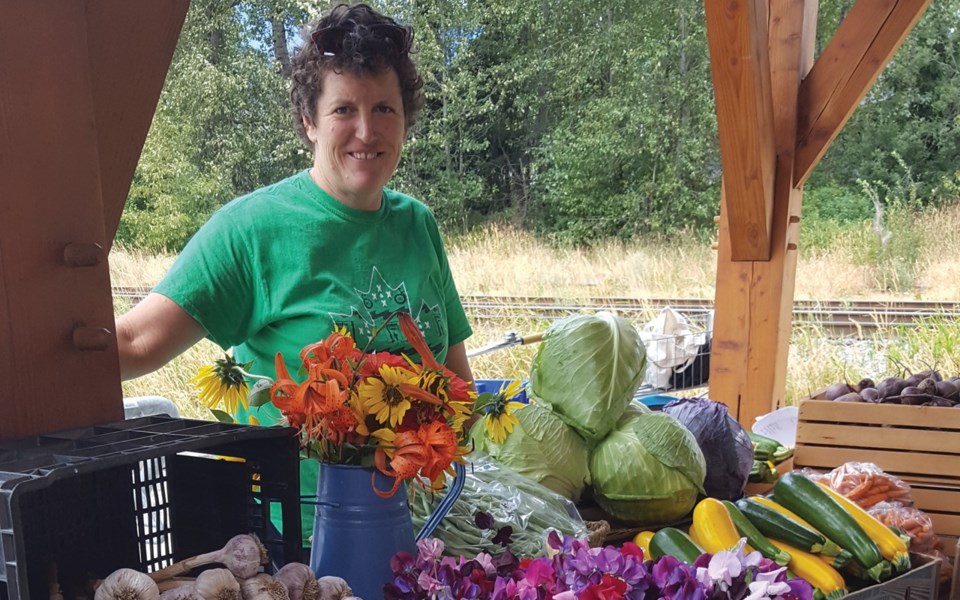Anna Helmer has noticed something over the past two decades she's been selling her family's organic potatoes at farmers' markets across the province.
"There's all kinds of little details that, after (being a market vendor) for 20 years are second nature to me, but I see people at market all the time that aren't doing it, and they're having a tough time," she said. "Then, if they don't do very well, they tend to blame the market, but I think there's a lot more to it."
A fourth-generation farmer, Helmer decided to combine her love of writing with her market experience to pen a handy guide for farmers looking to hawk their wares. A Farmer's Guide to Farmers' Markets, self-published through Amazon last month, runs through several tricks of the trade that would seem logical to a seasoned retail clerk, but perhaps not to the greenthumb waking at dawn every morning to till the fields.
"Nobody tells you that customer service needs to be a strong suit when you take farming school," said Helmer. "I don't think it would occur to people that they need to know how to move a line up really quickly through a till, that you need to say please and thank you when you count out change, that you need to arrive early to set up your stall.
"There are just so many little things that make that customer interaction really important."
The key for any market vendor, according to Helmer, is preparation. She sees many new farmers at markets with dollar signs in their eyes, poised to capitalize on B.C.'s farmers'-boom without doing their due diligence beforehand.
"You can't just walk up with your backyard berries and expect to be successful," she mused.
Helmer deems farmers' markets "a place of mutual appreciation" between vendor and customer, and that gratitude has to shine through in every interaction.
"You have to find a way to convey that appreciation," she said. "It starts with the farmer appreciating the customer, because customers have so many choices now that they don't need to line up in the rain for potatoes anymore.
"You need to entice that customer, to make it worth their while. The thing that none of those other (retail) places have is that interface between the farmer and the customer."
That face-to-face dynamic means that farmers have to have a deeper breadth of knowledge than they used to. You wouldn't typically ask the produce guy in your local supermarket for tips on how to best prepare a winter squash, but for a farmer behind a market stall, those kinds of questions are par for the course.
"That's another irony, because we're farmers, not chefs. And a lot of us don't have time for cooking fancy meals. We're boiling potatoes and putting chopped kale on top and calling it done," Helmer said. "But you do have to have those conversations, so that's another part of what you need to learn."
Since The Whistler Question folded earlier this year, Helmer, who wrote a biweekly farming column, hasn't had as much of an outlet for her creative non-fiction. She's toying with the idea of hosting a storytelling night where she can share some of the quirky tales she's amassed from years at Helmer's Organic Farm in Pemberton. "I think I'll be experimenting with a few things," she said.
A Farmer's Guide to Farmers' Markets is available for purchase at amazon.ca.




